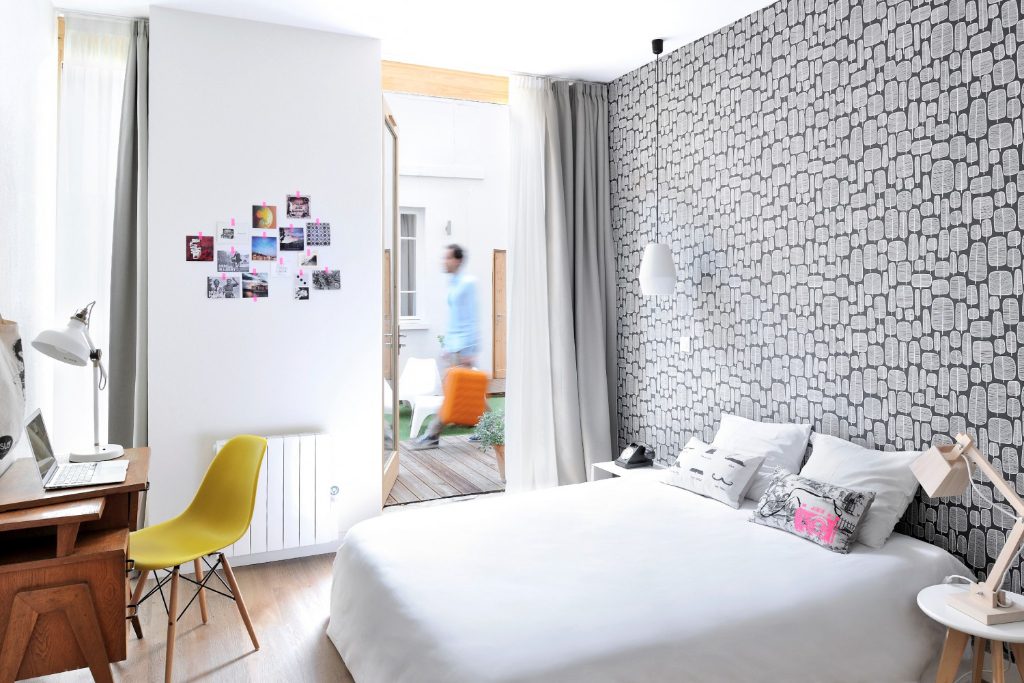Skift Take
The story of software maker Cloudbeds, named the fastest-growing travel and hospitality company in the U.S., points to a broader trend of smaller hotels adopting new tools to manage their properties.
For years, owners of small hotels and hostels have been signing up for subscriptions to cloud-based software, which generally gives them access to business data from mobile devices and spares them from being tethered to hardware. But it’s only recently that these tools have begun to talk to each other in ways that can reduce owner headaches.
Hoteliers without technology teams are often left to their own devices, literally, when it comes to figuring out their software needs.
Many owners of hotels and hostels with about 120 rooms or less use several separate online tools to accept and manage payments, manage their reviews on sites like TripAdvisor, distribute their rates to sites like Trivago or Booking.com, send emails and texts to guests, create and track customer profiles, and track and monitor room occupancy and inventory for check in and check out.
Many software providers enable connections on connections on connections with various systems. The advantage is that you can plug in your favorite channel manager for distribution rates to your favorite revenue management tool.
The disadvantage to this common model is that the systems may not share information smoothly or quickly. That may mean that a front desk worker has to take a lot of slow steps to check in a guest or a general manager must go in and out of multiple applications to complete a task.
One company taking a different approach is Cloudbeds, a business that was the fastest growing travel and hospitality company in the U.S. last year, according to Inc. magazine.
The startup has taken a rarer path of building a full suite of tools. The advantage of having a suite is there’s one sign-in process and interface, which may make it simpler to train workers to use.
A downside is that any given tool in the suite may not be as fully featured as a specialist company’s tool. In March, Cloudbeds aimed to address that latter issue by opening a marketplace where it will connect with third-party services on an a la carte basis.
So far, more than 22,000 owners of hotels, hostels, and vacation rentals — 30 percent of which are based in the U.S. or Canada — manage their properties using its systems, said CEO Adam Harris, who co-founded the San Diego startup along with Richard Castle in 2012 and has raised more than $21 million in venture capital.
Cloudbeds is a small business, generating more than $10 million in revenue last year. However, it plans to hire 50 more workers by June, and it highlights growth in a crowded, young market.
Frothy, Fractured Market
Cloudbeds represents a fresh wave of companies that has been targeting the so-called long-tail of the market. Jonas Software has recently rolled up a hospitality suite. Alibaba-backed Shiji is pushing StayNTouch and a related suite of services.
These cloud companies are challenging the pioneers that got their start in the on-premise computing system days, such as Windsurfer by Sceptre Hospitality Resources, Northwind’s Maestro PMS, and InnQuest’s RoomMaster, with 5,000 properties.
India-based Hotelogix, which stitches together more than 70 third-party systems to its property management system for centralized control at the corporate level, has been adding properties at a rapid pace. Other players include Apaleo,
innRoad, eZee’s Frontdesk Anywhere, SiteMinder’s Little Hotelier, Mingus’ Hotello, Mews, RoomKeyPMS, Eviivo, and GuestPoint. In Europe, UK-based Guestline signed up more than 350 hotels to its platform.
Everything Is Converging
One rare quality in Cloudbeds, compared to other property management software providers, is its avid embrace of offering its software to the owners of vacation rental property managers. Up until now, hotels and vacation rentals have been seen as products that are too different to run on the same software. Each sector has separate clusters of software services reaching them.
Expect other players to mimic the move because several factors are pushing everything to converge in hospitality, one of Skift’s Megatrends of 2019.
Later this year, Cloudbeds aims to appeal to multi-property owners by taking its current user experience to daisy-chain several properties in one view rather than having to switch between multiple screens for each hotel. If successful, that design could especially appeal to property management companies running dozens or even hundreds of properties. But one reason it hasn’t become a standard interface is that it’s a daunting technical challenge.
The platform model is one of several approaches catching fire in hotel tech. The move among smaller players echoes how major hotels and chains have been adopting cloud-based, platform systems from Oracle, Agilysys, Infor, Amadeus Hospitality, and others, as Skift Research noted in last year’s Hotel Tech Stack report.
More players keep entering the game. In March, RLH, the Denver-based parent corporation of the Red Lion Hotels chain, is getting into software sales. The franchisor has launched a subsidiary, RLabs, that aims at independent and boutique hotels.
The Daily Newsletter
Our daily coverage of the global travel industry. Written by editors and analysts from across Skift’s brands.
Have a confidential tip for Skift? Get in touch
Tags: hotel front desk, hotel tech, hotel tech stack, hotel technology, property management, startups
Photo credit: A guest room at the Slo Living hostel in Lyon, France, which uses Cloudbeds services to manage its property. Slo Living hostel
